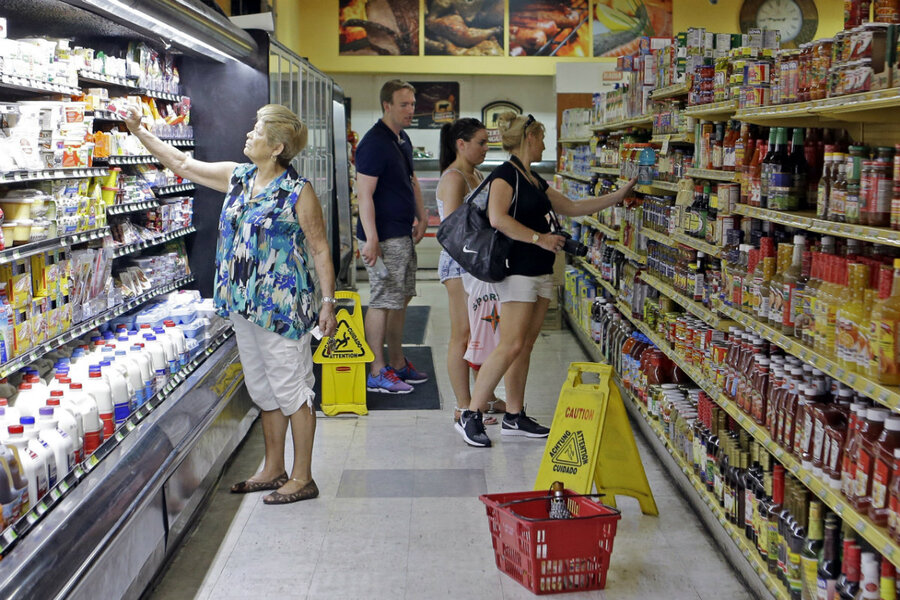Why industry experts are excited by a new food label
Loading...
In an effort to reduce food waste, two major grocery trade organizations joined forces on Thursday and committed to using only two phrases: “use by” and “best if used by” on food packaging.
The previous date labels included "expires on," "better if used before," "best by," "sell by," and others, which collectively confused consumers and led them to throw away food that was still perfectly good, say experts.
The new initiative follows the release of new label guidelines from the US Department of Agriculture in December, when they recommended "Best if used by," as research suggested consumers understood that as a clear "indicator of quality, rather than safety." The USDA can issue recommendations but not requirements, as federal law currently allows food producers to label their food "entirely at the discretion of the manufacturer."
But Thursday’s announcement brings the United States closer to the USDA's goal of limiting food waste, as food manufacturers and retailers get on board to adopt standardized, voluntary measures that have received support from retail giant Wal-Mart and will be widely implemented by next summer.
“We have strong support throughout the industry for this streamlined initiative,” Meghan Stasz, senior director of sustainability at the Grocery Manufacturers Association, told CBS Thursday. “It’s an example of the food industry really stepping up and stepping forward to address a consumer challenge.”
Food labels, which have for years confused consumers, have landed billions of pounds of wholesome food in the trash, says the USDA. According to a 2013 study by the Natural Resources Defense Council, about 20 percent of a US household’s food waste is due to misinterpretation of date labels.
The confusion is not limited to consumers: many sellers throw out food after the "sell-by" date, "fearing consumers will either not buy the food or think the stores are carrying old products," according to Business Insider.
Without a clear national standard, the problem has continued to grow. The latest report from the Barilla Center for Food & Nutrition shows that US retailers and households together throw away 92 million pounds of food each year, placing the nation third in the world for the most per-person food waste, after Saudi Arabia and the United Arab Emirates.
The industry has seen no shortage of attempts to address the food waste problem.
Last May, Rep. Chellie Pingree (R) of Maine introduced a bill, “the Food Date Labeling Act of 2016,” seeking to establish the standards for food labeling, but the bill died in committee.
Four representatives, including Ms. Pingree, are behind a related bill introduced two weeks ago that is comparable to one already adopted by Italy. Its approach, considered “one of the best solutions” by the Barilla Center, strives to raise awareness and offer incentives that make it easier for farmers and companies to donate food to the hungry.
The first hurdle is getting Americans to recognize the severity of the food waste problem, wrote The Christian Science Monitor's Ally Rosenberger in November, as “almost half of all Americans do not realize that food waste is a problem in the United States."
While it is too early to predict tell the future of the new bill, food policy experts say they are glad the food industry is adopting “one of the most cost-effective” methods.
“It’s still a first step,” Emily Leib, director of Harvard Law School's Food Law and Policy Clinic, which co-authored the 2013 report, told the Washington Post. “But it’s very significant.”








